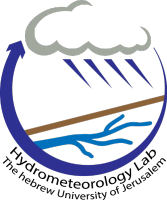Benito G, Rohde R, Seely M, K??lls C, Dahan O, Enzel Y, Todd S, Botero B, Morin E, Grodek T, et al. Management of alluvial aquifers in two Southern African ephemeral rivers: Implications for IWRM. Water Resources Management [Internet]. 2010;24 :641–667.
Publisher's VersionAbstractThis paper summarises innovative research into the assessment of long-term groundwater recharge from flood events in dryland environments of the Kuiseb (Namibia) and the Buffels (South Africa) rivers. The integrated water resource management (IWRM) policies and institutions affecting the exploitation of groundwater resources in each of these developing countries are compared. The relatively large alluvial aquifer of the Kuiseb River (similar to 240 Mm(3)) is recharged from irregular floods originating in the upper catchment. Reported abstraction of 4.6 Mm(3) per year is primarily consumed in the town of Walvis Bay, although the groundwater decay (pumping and natural losses along the period 1983-2005) was estimated in 14.8 Mm(3) per year. Recharge is variable, occurring in 11 out of 13 years in the middle Kuiseb River, but only in 11 out of 28 years in the middle-lower reaches. In contrast, the Buffels River has relatively minor alluvial aquifers (similar to 11 Mm(3)) and recharge sources derive from both lateral subsurface flow and floodwater infiltration, the latter limited to a recharge maximum of 1.3 Mm(3) during floods occurring once every four years. Current abstractions to supply the adjacent rural population and a few small-scale, irrigated commercial farms are 0.15 Mm(3) yr (-aEuro parts per thousand 1), well within the long-term sustainable yield estimated to be 0.7 Mm(3) yr (-aEuro parts per thousand 1). Since independence in 1990, Namibia`s water resource management approach has focussed on ephemeral river basin management of which the Kuiseb Basin Management Committee (KBMC) is a model. Here, some water points are managed independently by rural communities through committees while the national bulk water supplier provides for Walvis Bay Municipality from the lower aquifers. This provides a sense of local ownership through local participation between government, NGOs and CBOs (community-based organisations) in the planning and implementation of IWRM. Despite the potential for water resource development in the lower Buffels River, the scope for implementing IWRM is limited not only by the small aquifer size, but also because basin management in South Africa is considered only in the context of perennial rivers. Since 2001, water service delivery in the Buffels River catchment has become the responsibility of two newly created local municipalities. As municipal government gains experience, skills and capacity, its ability to respond to local needs related to water service delivery will be accomplished through local participation in the design and implementation of annual `integrated development plans`. These two case studies demonstrate that a variety of IWRM strategies in the drylands of developing countries are appropriate depending on scales of governance, evolving policy frameworks, scales of need and limitations inherent in the hydrological processes of groundwater resources.

